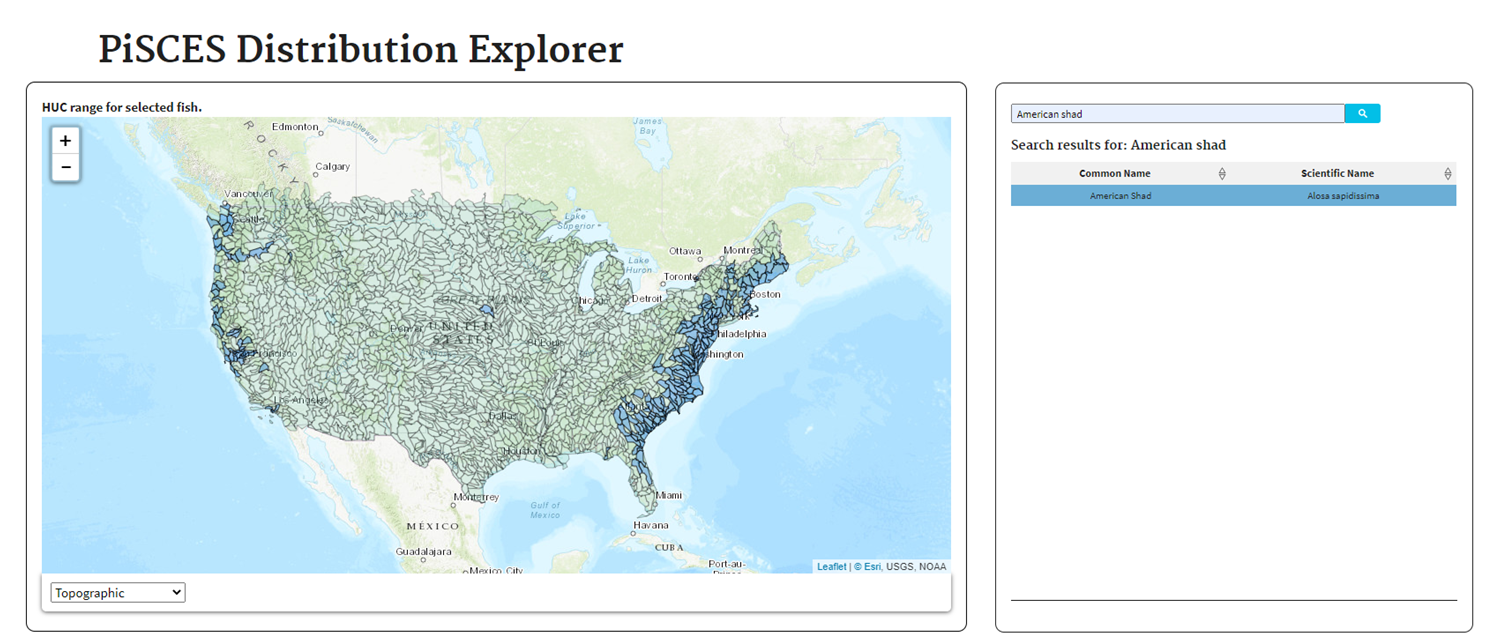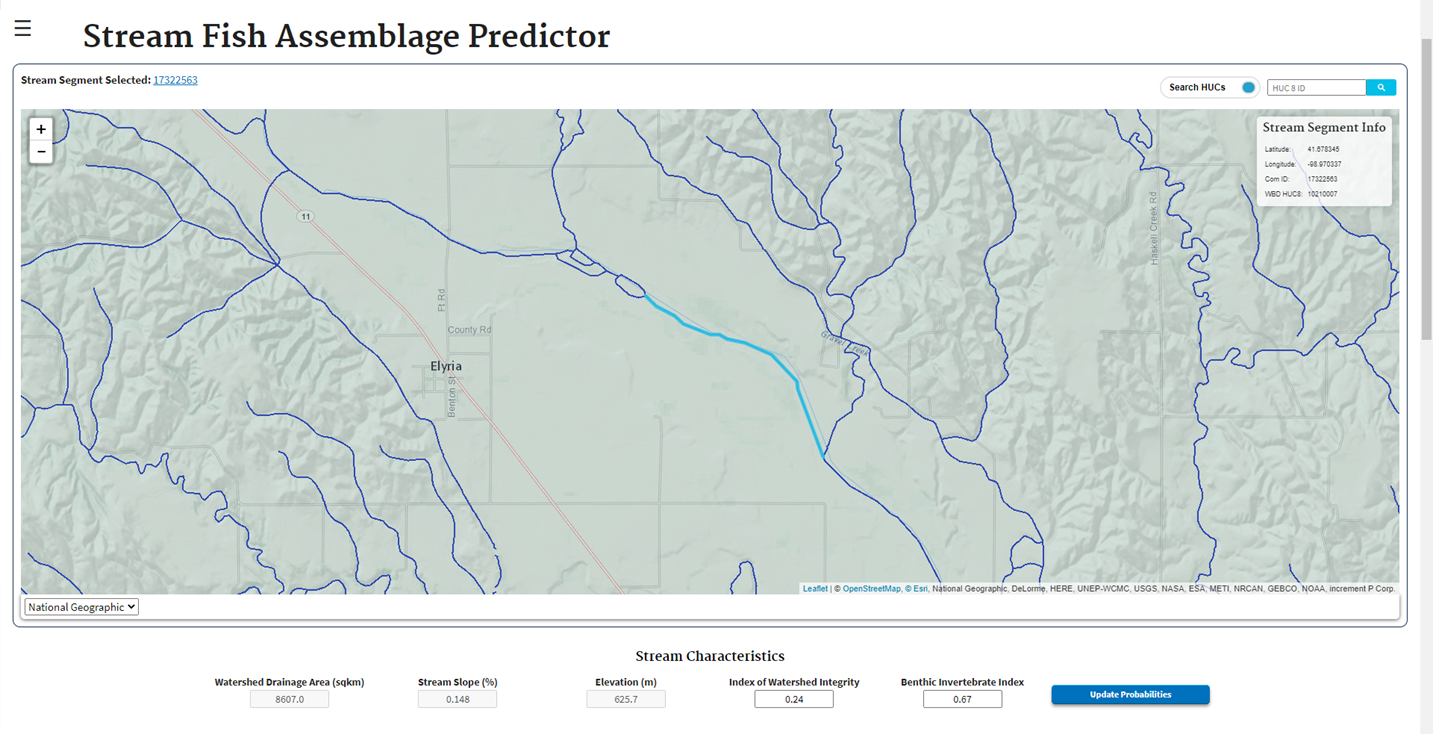Online Tool Predicts Fish Communities in Streams Across the US
In light of an uncertain future, fisheries conservationists and managers increasingly require tools that help them make proactive instead of reactive management decisions. Examples of proactive tools are population and distribution models, which help managers predict fish species population size or location based on a variety of environmental and anthropogenic variables. These predictions allow fisheries managers to anticipate a range of potential conservation scenarios and plan accordingly. However, quality models rely on real data such as the current distribution and abundance of fish species. After all, we have to know where fish are now in order to predict where they could be.

Figure 1. Distribution Explorer section in PiSCES, set to show the US distribution of American shad (Alosa sapidissima).
Data about the presence or absence of fish species is hard won in terms of time, money, and effort. It is collected in bits and pieces by scientists focusing on a specific region or species. Compiling this information into a large database involves a huge collaboration, but the final product will be incredibly valuable to managers, scientists, and conservation groups. This is why Dr. Mike Cyterski and a team of researchers at the US Environmental Protection Agency and the Oak Ridge Institute for Science and Education have developed the Piscine Stream Community Estimation System, or PiSCES. This online tool can be used to predict which fish species are most likely present in streams and rivers across the US. PiSCES compiles historic and current information about the presence of fish species. Unfortunately this information is not available for all streams and rivers in the US, so the researchers who developed PiSCES decided to develop a method to predict the mostly likely fish community in areas where actual data has not been recorded. There have been many studies that relate the presence or absence of a certain fish species to habitat characteristics. The presence of a particular species may be regulated by things like temperature, flow rate, and dissolved oxygen, among many other factors. PiSCES predicts fish communities within a particular stream by using physical characteristics of the stream (drainage area, stream slope, mean elevation of the entire catchment), as well as two indices that are related to the quality of the habitat and its ability to support a lot different species.

Figure 2. Assemblage Prediction section in PiSCES, set for a section of stream on the North Loup River in Nebraska. Users can adjust stream characteristics to compare the predicted fish community.
PiCSES is composed of three sections. The first section is the Distribution Explorer, which provides larger-scale maps of the distribution of a particular fish species across the US (Figure 1). On a more local scale, the Assemblage Predictor section allows you to select a stream segment and see the list of predicted species (Figure 2). This section also allows you to change the characteristics of your stream segment to see how this effects which species are present. You can also estimate the abundance or total biomass of a particular species (Figure 3). The third section is the Database Explorer, which allows you to ask questions based on one or several species of interest rather than a particular stream.

Figure 3. Predicted fish communities for stream segment in Figure 2 . The top table on the left shows all predicted species; the top table on the right shows the predicted community filtered by an average threshold value. The bottom table shows the abundance calculator for the filtered community based on a total biomass of 50 kg.
PiSCES is a useful interactive tool for scientists performing a range of studies from impact assessments to developing models to predict changes in future species distributions. However, it has an appeal beyond scientific study—use it to learn about the fish community in your local stream!
References:
Cyterski M, Barber C, Galvin M, Parmar R, Johnston JM, Smith D, Ignatius A, Prieto L, and Wolfe K. 2020. PiSCES: Pi(scine) stream community estimation system. Environmental Modelling and Software. 127: 104703.



